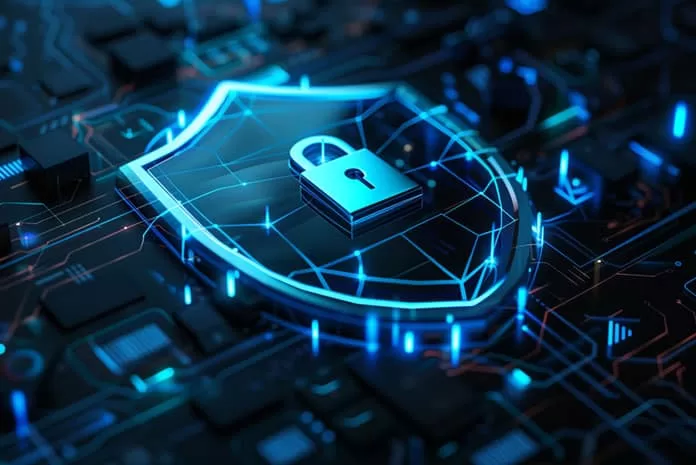TCS launches 2025 cybersecurity outlook; GenAI, cloud security, and ‘Zero Trust’ remain key priorities for enterprises – CRN


TCS has announced its 2025 Cybersecurity Outlook, a list of technology trends and focus areas curated by TCS experts. Generative artificial intelligence (GenAI), cloud security, and supply chain resilience will be key for organisations to effectively navigate the threat landscape in the coming year.
As next-gen technologies continue to gain momentum across industries, they give rise to new and complex threats. Experts and leaders at TCS have identified seven focus areas that will influence cybersecurity and help organisations prioritise their security investments to prepare for increasing cyberattacks.
Ganesa Subramanian Vaikuntam, Global Head of Cybersecurity, TCS, said, “With geopolitical shifts and evolving technology, global cybersecurity is undergoing a major transformation. GenAI is enhancing operational efficiencies, but organisations must equip themselves to counteract cyber threats. Organisations must harness these advancements and implement GenAI-powered threat detection and response systems to stay ahead of the curve. In this era of evolving technologies, a robust and proactive cyber resilience strategy is not just an option, but a necessity for enterprises to effectively navigate and mitigate unforeseen cyber incidents.”
In the face of emerging cyber threats, enterprises are looking for ways to leverage GenAI to secure their businesses, according to TCS’ 2025 Cybersecurity Outlook. The cybersecurity trends to look out for in 2025 are:
Influence of GenAI in cybersecurity on the rise
GenAI is transforming organisational operations but is also being exploited by cybercriminals for advanced attacks like deepfakes, phishing, data manipulation, and new malware. In response, organisations must fight fire with fire by deploying GenAI-powered threat detection and response systems.
Cloud security remains crucial cloud computing adoption continues to accelerate, organisations need to implement strong security protocols like encryption, access controls, and continuous monitoring. Maintaining proper cloud configurations is crucial to prevent unauthorised access and breaches, and those moving to multi-cloud or hybrid environments will need to adapt their security measures accordingly.
Elastic supply chains will be relevant for operational integrity
In 2025, organisations will need flexible, resilient supply chains due to changing geopolitics and partner ecosystems. Leaders must develop proactive strategies to adjust their supply networks while protecting sensitive data and maintaining regulatory compliance. Enhancing supply chain resilience will be increasingly vital for preserving operational integrity in the face of uncertainty.
Emerging business models will underscore the need to be secure by design
At a time when digital technologies, IoT capabilities, and advanced connectivity are driving new business models in EV charging, DERMS, autonomous vehicles, and other connected factories, organisations must secure their value chains to ensure these businesses are safe by design. By 2025, the growth of IoT devices will require stronger device hardening, secure communication channels, and ongoing vulnerability assessments to maintain momentum in business growth.
Cybersecurity Mesh Architecture will pave the way for Zero Trust security
Organisations are moving from traditional security models to zero-trust architecture, which requires continuous authentication and limited access to minimise threats. By 2026, most large enterprises will adopt zero-trust methods, consolidating security tools to be more efficient. To adapt, organisations must use integrated platforms for orchestrating and automating cybersecurity while working towards Cybersecurity Mesh Architecture (CSMA) for dynamic, collaborative, and secure environments.
CSOs will adopt an ‘automation-first’ approach to Managed Detection and Response
Modern Managed Detection and Response (MDR) combines Security Information and Event Management (SIEM), Security Operation Centers (SOCs), Security Orchestration, Automation and Response (SOAR), Extended Detection and Response (XDR), threat hunting, threat intelligence, and various attack simulations. These components must integrate seamlessly under an “automation-first” approach for strong cyber defense against new technologies like Gen AI, quantum computing, and 5G expansion. By 2025, organisations are likely to seek more industry-specific and integrated cyber-physical security solutions.
Back to basics: Cyber resilience will be essential for business security
Now more than ever, a robust cyber resilience strategy is crucial for organisations to handle unexpected cyber incidents and will require taking a fresh look at the basics: regular backups, detailed incident response plans, and business continuity measures. Something as simple as regular drills can enhance organisational preparedness and response capabilities. Promoting a culture of resilience will help minimise downtime and disruptions from cyberattacks.





